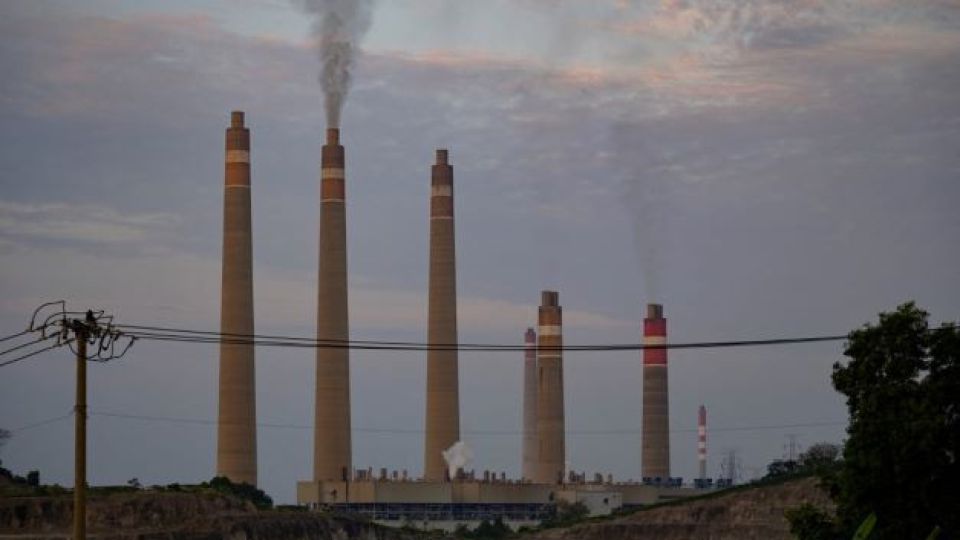November 1, 2022
JAKARTA – Indonesia takes baby steps toward the country’s net-zero emissions goal by introducing three schemes to retire coal-fired power plants early. Experts have expressed optimism that stakeholders would be able to move forward with the plan despite the long-winded process.
Hartanto Wibowo, state-owned electricity monopoly PLN’s director of corporate planning and business development, introduced on Oct. 18 three options to retire coal-fired power plants earlier: write-off from PLN’s book, a spin-off with blended financing and independent power producer (IPP) refinancing.
PLN and state-owned coal miner PT Bukit Asam signed on the same day a principal framework agreement (PFA), which “probably” would be carried out using the spin-off blended financing scheme, Hartanto said in a statement.
The PFA, aimed to technically slash its operational life from 24 years to 15 years, would be followed by Bukit Asam’s acquisition of PLN’s Pelabuhan Ratu coal-fired power plant.
However, to date, the deals are still undergoing a due diligence process.
Elrika Hamdi, an energy economist with the Institute for Energy Economics and Financial Analysis (IEEFA), said challenges to implement the deal would include the complex valuation process and the coal mining company’s financial condition.
“It could be a lengthy process. Meanwhile, questions remain on how Bukit Asam will pay for the coal-fired power plant — whether they will use their cash equity, look for lenders or have access to the government’s blended finance scheme, which would lower the financing cost,” she told The Jakarta Post on Wednesday. “We need more details [on how the scheme will be implemented].”
She went on to say that in such a case, it is normal to expect a complex valuation process until Bukit Asam and PLN can reach an agreement on the transfer value of the 1,050-megawatt plant, which was estimated to reach up to US$800 million.
“Bukit Asam could be seen as the natural buyer of the coal-fired power plant considering [the company] is a state-owned company with a healthy cashflow,” Elrika said.
Bukit Asam president director Arsal Ismail explained that the PFA signing marked the beginning of the discussion regarding the technical, economic and feasibility aspects of Pelabuhan Ratu transfer to Bukit Asam. In the process, Bukit Asam would also analyze the blended financing option provided by the government.
“Bukit Asam is very careful [in taking this step]. Everything is still in progress,” he said in a virtual press conference on Thursday, when asked when the due diligence process would be finalized.
He did not rule out the possibility of using a blended financing scheme designed by the government to take over the coal-fire plant, saying that such a scheme would help maintain the performance of the company’s fundamentals.
“The most important thing is that this acquisition would not disrupt Bukit Asam and PLN’s financial conditions,” Arsal said.
Bukit Asam has booked Rp 10 trillion (US$641.4 million) in profit in the January-September period, rising 110 percent year-on-year (yoy). The coal mining giant saw its revenue rise 60 percent yoy to Rp 31.07 trillion in the same period on high coal prices, Arsal said on Thursday.
Meanwhile, the company saw its cost of revenue rise by 54 percent yoy to Rp 17.19 trillion, partly due to rising costs of mining services as well as fuel and lubricants.
The long-remaining lifespan of domestic coal plants, the current backbone of Indonesia’s power generation, is the key hurdle to reaching the country’s net-zero emissions goal.
To address the challenging task, Indonesia has created a funding platform for its renewable energy projects, including a pioneering program to retire coal-fired power plants, and appointed state-owned financing firm PT Sarana Multi Infrastruktur (SMI) to manage the funds.
The funding-platform manager would be responsible to develop de-risking financial instruments, a development grant facility (DGF), as well as low-cost financing to help make challenging projects more financially viable.
The Asian Development Bank (ADB) and the government announced a partnership to develop the ETM during the 26th United Nations Climate Conference (COP26) in Glasgow, the United Kingdom, last year, to speed up the retirement of high-emission coal-fired power plants in Indonesia.
The funding platform will pool funds from private banks, philanthropists, multilateral organizations and the Group of Seven (G7) countries, among other sources, to acquire and then retire coal plants early.
“We appreciate the government’s efforts to implement early retirement of coal-fired power plants […] next, we have to ensure every step taken considers fairness and transparency,” Tata Mustasya, Greenpeace Indonesia’s head of climate and energy campaign, told the Post on Wednesday.
Energy Minister Arifin Tasrif previously said that the energy ministry is studying the possibility of retiring 33 coal-fired power plants with a total capacity of 16.8 GW in the preliminary stage of the early retirement program.
He went on to say that the government is in a negotiation process to retire two to three coal-fired power plants this year.
There are a total of 12 coal-fired power plants viable for retirement in the 2022-2023 period, according to a research by the Institute for Essential Services Reform (IESR) and University of Maryland. The research looks into 72 coal fleets with capacity of 43.4 GW that are connected to PLN’s grid.


